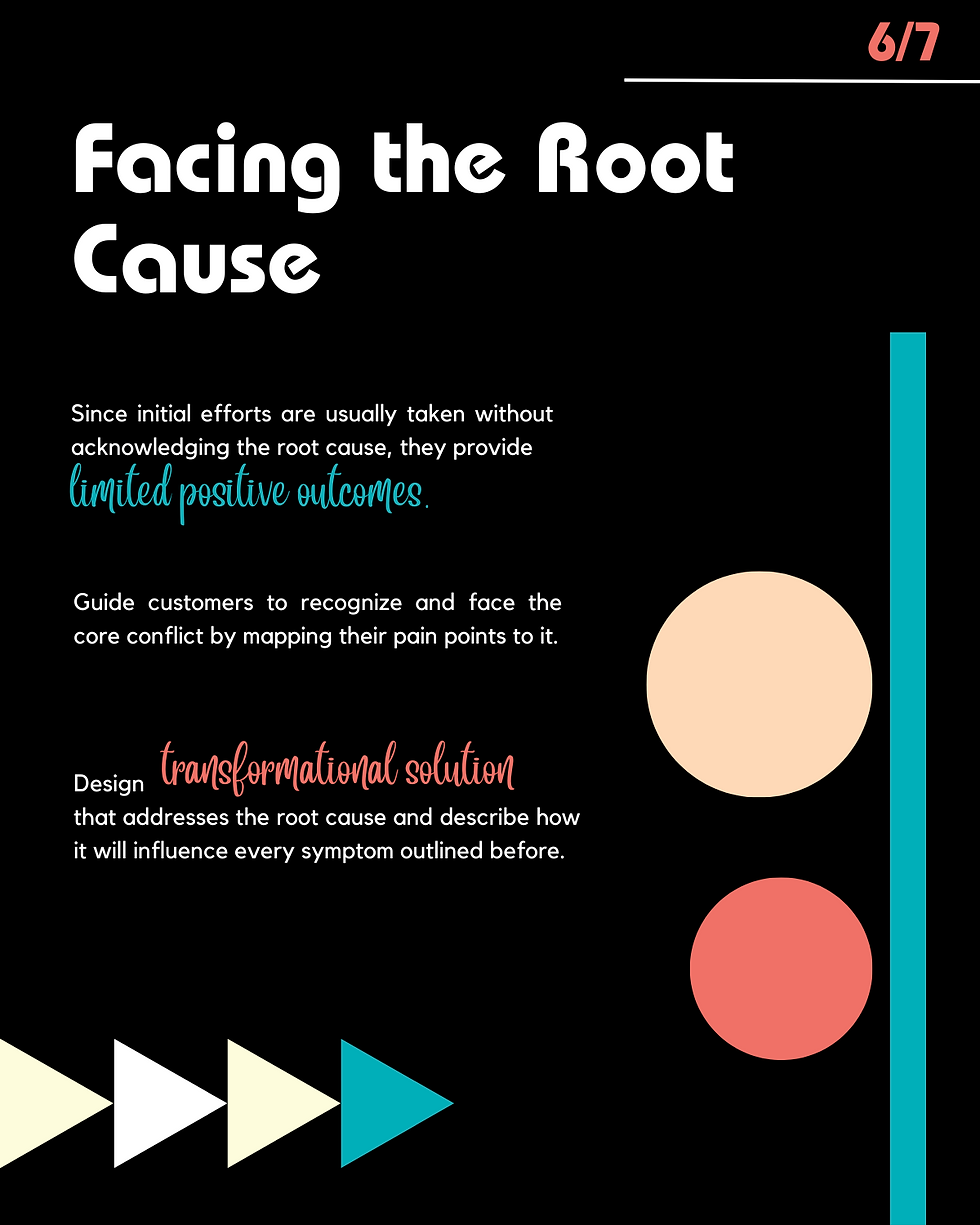- May 24, 2024
- 3 min read

Marketing is becoming more and more personalized and, as marketers, we all start to care about customers' pains more than about our solutions.
Just kidding! Of course, the solution comes first, but the pain makes our customers search for a solution and find us, so our job is to make sure they can recognize themselves in our communications.
Honestly, nobody cares about the solution - all we care about is not living in pain, but that's not how you sell your marketing campaign to a stakeholder.
Here's a pain point template that works for me.
Step 1: Is this a pain point or just a fact?
I struggle with [Fact].
“I struggle with a [lack of automation]."
You can do nothing about this fact even though it sounds like someone is in pain:
Who struggles?
What does ‘struggle’ mean?
What is enough automation?
Why manual doesn’t work?
You don‘t know where to start to solve it.
Step 2: Fact becomes a pain when it blocks you from achieving your goal
I want [Desired Outcome], but struggle with [Pain Point].
I want to [launch targeted marketing campaigns faster], but struggle with a [lack of automation]."
Goal narrows down the focus and provides draft definition of acceptance criteria: if we‘ve achieved the goal, then we’ve successfully solved the pain point.
Step 3: What makes this goal important?
Because [Trigger Event], I want [Desired Outcome], but struggle with [Pain Point].
"Because [we are preparing for a major product launch], I want to [launch targeted marketing campaigns faster], but struggle with a [lack of automation]."
Every goal has a trigger that affects the timeline, resources and level of attention that solving the pain will get. This is the change that helps you to prioritize the initiatives and pain points associated with each of them.
Step 4: Okay, but what if we do nothing?
Because [Trigger Event], I want [Desired Outcome], but struggle with [Pain Point], leading to [Consequences of Not Acting].
"Because [we are preparing for a major product launch], I want to [launch targeted marketing campaigns faster], but struggle with a [lack of automation], leading to [missed opportunities and lower conversion rates]."
Not acting upon the fact we’ve been living with up until now is always an option, so why would we? This is what makes a blocker a true pain - the price of not dealing with it - which is why it should ultimately mean money.
Step 5: Fine, Houston, we have a problem! Who’s in charge?
Because [Trigger Event], as a [Job Title], I want [Desired Outcome], but struggle with [Pain Point], leading to [Consequences of Not Acting], making it essential for [Stakeholder/ Budget Holder] to support the solution due to [Specific Influence].
"Because [we are preparing for a major product launch], as the [Marketing Director], I want to [launch targeted marketing campaigns faster], but struggle with a [lack of automation], leading to [missed opportunities and lower conversion rates], making it essential for the [Chief Revenue Officer] to support the solution due to [decreased overall revenue growth]."
If you’re selling to businesses, not end users, you will always have to deal with at least two people: one in charge of the solution, and the other one - in charge of the budget. Make sure you know and address all stakeholders‘ points of view.
I believe that a true pain point sounds a lot like a user story, even if you do services, not products. Because it gives you a scenario you can use to structure landing pages and blog posts, case studies, and webinar agendas.
One caveat: each of the templates above can help you structure the materials of different levels of generalization – from the most general used to do broad keyword research, to the most specific giving a structure to a case study or a pitch deck.























